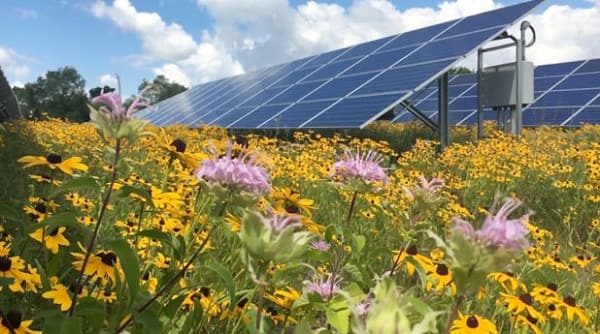Working to overcome local zoning barrier to community solar

We’ve talked a lot about community solar lately. We provided an overview of community solar basics, profiled the state’s first community solar project in Baltimore city, and urged solar supporters like you to check out our community solar project platform. We’ve also discussed some of the biggest challenges facing community solar in Maryland, including the patchwork of zoning laws and regulations imposed by jurisdictions around the state. Zoning laws help determine where solar can be installed—on rooftops or farmland and everything in between. While local zoning is an important aspect of community control, it can also be an impediment for communities that want to embrace solar.
In recognition of this challenge, Solar United Neighbors and other groups have been working with partners around Maryland to develop mutually agreed upon zoning standards that balance community concerns with the interests of expanding access to solar. That’s why Solar United Neighbors, the Sierra Club, and the Maryland Association of Counties (MACO) sponsored a symposium last month that brought together stakeholders across the spectrum—including industry, advocates, and public officials—for a day of discussion to hash things out.
Throughout the day, in a series of panels and groups discussions, participants engaged on a variety of topics, including:
Perspectives on Solar: Benefits and Challenges
Industry, environmental, land preservation, and community solar professionals talked about the different points of view influencing solar conversations. They identified ways in which mutual interests could align so that the various groups could work together to make community solar a reality with little to no opposition.
Land Use and Zoning Regulations
County officials shared their community’s experience with solar zoning regulations and how they came to the decisions and current regulations that are in place. This discussion was useful for the diverse perspective offered from localities around the state, which allowed for an open discussion of the challenges and benefits offered by different approaches to solar zoning laws.
Revenue and Income
Industry and county representatives both shared their perspectives on the complexities of balancing the interests of counties seeking to use solar arrays to generate revenue and the interests of developers seeking incentives. Specific approaches discussed included the role of property taxes and waivers, incentives for co-location of solar developments, and the use of brown fields.
During lunch, the group discussed specific projects that used both brown field siting and pollinator friendly farming techniques. It was encouraging to see the potential versatility of community solar projects, and how projects can be designed to meet the needs of specific communities.
Reflections and next steps
After a full day of discussion, debate, and learning, there’s still much left to do. This was the start of a healthy conversation on local solar zoning regulations, not the end. We’ll continue to work with everyone—communities, advocates, industry, and local governments—to make sure community solar is a success.
In the meantime, we’ve launched a first-of-its-kind online subscriber platform for community solar projects. The platform offers clear, independent, and vendor-neutral information for consumers looking to compare available projects in their area. If you’re interested in community solar, take a look to see what projects offer the savings and community benefits that appeal to you. We make it easy by offering an apples to apples comparison, without the sales jargon that often comes from the developers themselves.
Working together, hopefully we can make community solar easy to access for all Marylanders who want to let the sun pay their electric bill!
